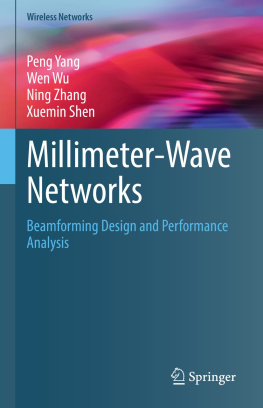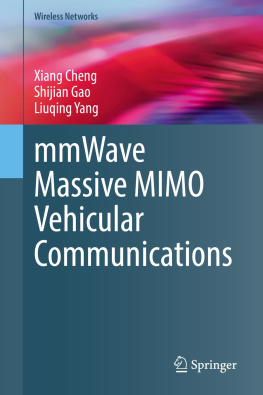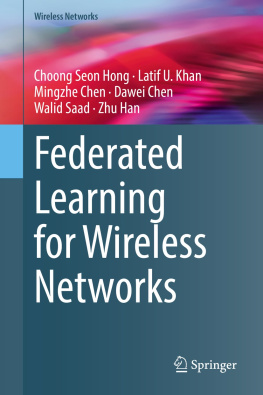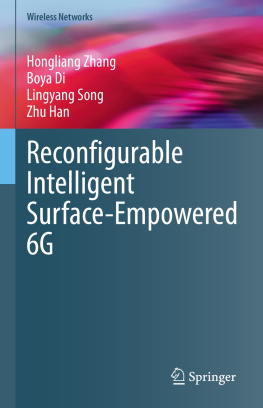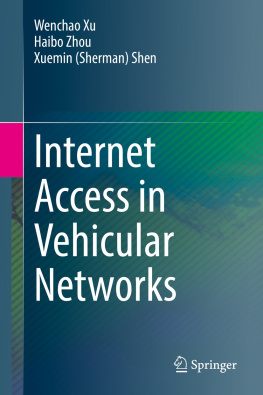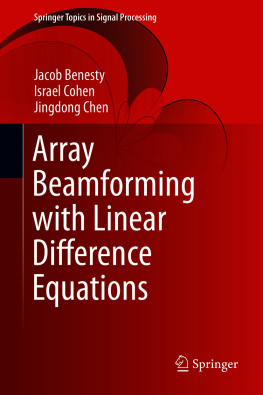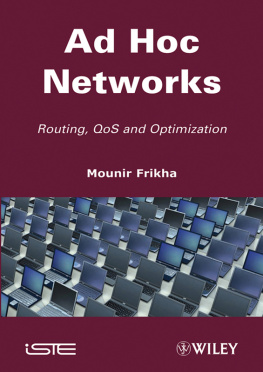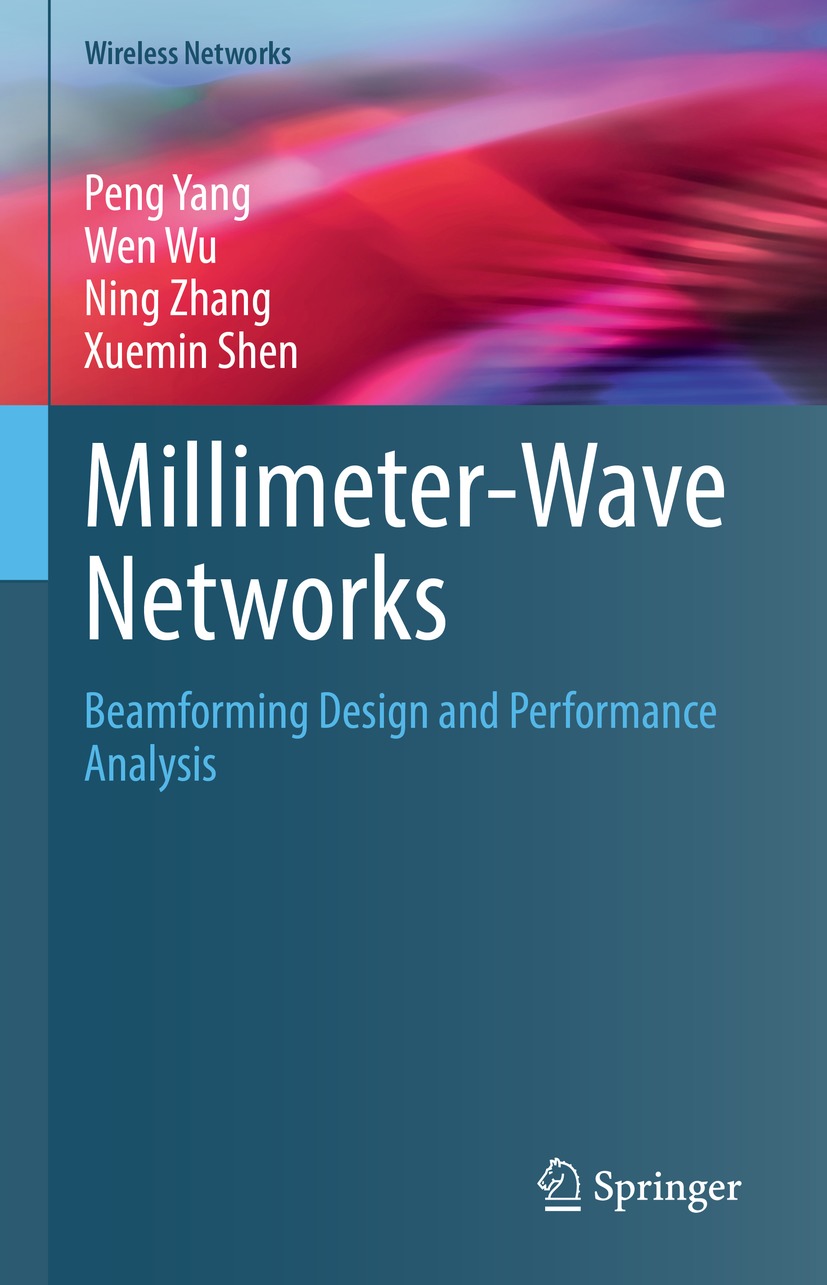Wireless Networks
Series Editor
Xuemin Shen
University of Waterloo, Waterloo, ON, Canada
The purpose of Springers Wireless Networks book series is to establish the state of the art and set the course for future research and development in wireless communication networks. The scope of this series includes not only all aspects of wireless networks (including cellular networks, WiFi, sensor networks, and vehicular networks), but related areas such as cloud computing and big data. The series serves as a central source of references for wireless networks research and development. It aims to publish thorough and cohesive overviews on specific topics in wireless networks, as well as works that are larger in scope than survey articles and that contain more detailed background information. The series also provides coverage of advanced and timely topics worthy of monographs, contributed volumes, textbooks and handbooks.
** Indexing: Wireless Networks is indexed in EBSCO databases and DPLB **
More information about this series at http://www.springer.com/series/14180
Peng Yang , Wen Wu , Ning Zhang and Xuemin Shen
Millimeter-Wave Networks
Beamforming Design and Performance Analysis
1st ed. 2021

Logo of the publisher
Peng Yang
School of Electronic Information and Communications, Huazhong University of Science and Technology, Wuhan, Hubei, China
Wen Wu
Department of Electrical and Computer Engineering, University of Waterloo, Waterloo, ON, Canada
Ning Zhang
Department of Electrical and Computer Engineering, University of Windsor, Windsor, ON, Canada
Xuemin Shen
Department of Electrical and Computer Engineering, University of Waterloo, Waterloo, ON, Canada
ISSN 2366-1186 e-ISSN 2366-1445
Wireless Networks
ISBN 978-3-030-88629-5 e-ISBN 978-3-030-88630-1
https://doi.org/10.1007/978-3-030-88630-1
The Editor(s) (if applicable) and The Author(s), under exclusive license to Springer Nature Switzerland AG 2021
This work is subject to copyright. All rights are solely and exclusively licensed by the Publisher, whether the whole or part of the material is concerned, specifically the rights of translation, reprinting, reuse of illustrations, recitation, broadcasting, reproduction on microfilms or in any other physical way, and transmission or information storage and retrieval, electronic adaptation, computer software, or by similar or dissimilar methodology now known or hereafter developed.
The use of general descriptive names, registered names, trademarks, service marks, etc. in this publication does not imply, even in the absence of a specific statement, that such names are exempt from the relevant protective laws and regulations and therefore free for general use.
The publisher, the authors and the editors are safe to assume that the advice and information in this book are believed to be true and accurate at the date of publication. Neither the publisher nor the authors or the editors give a warranty, expressed or implied, with respect to the material contained herein or for any errors or omissions that may have been made. The publisher remains neutral with regard to jurisdictional claims in published maps and institutional affiliations.
This Springer imprint is published by the registered company Springer Nature Switzerland AG
The registered company address is: Gewerbestrasse 11, 6330 Cham, Switzerland
Preface
Millimeter-wave (mmWave) communication at 30 GHz300 GHz frequency bands has emerged as one of the most promising technologies in future wireless networks, which can offer high data rate connections by exploiting a large swath of spectrum. The mmWave communication can support many data-intensive wireless applications, ranging from high-definition mobile video streaming, cordless virtual reality gaming, to wireless fiber-to-home access. In particular, the current IEEE 802.11ad standard can provide a data rate up to 6.75 Gbps, and its successor IEEE 802.11ay can even support up to 40 Gbps. In mmWave communications, beamforming focusing the radio frequency power in a narrow direction is the key technology to overcome the hostile path loss. However, the distinct high directionality feature of beamforming technology poses many challenges in different network layers: (1) beam alignment (BA) latency in the physical layer, which is the processing delay that both the transmitter and receiver take to align their beams to establish a reliable connection. Existing BA methods incur significant latency on the order of seconds for a large number of beams; (2) medium access control (MAC) performance degradation. To coordinate the beamforming training (BFT) for multiple users, 802.11ad standard specifies an MAC protocol, i.e., BFT-MAC protocol, in which all the users contend for BFT resources in a distributed manner. Due to the deafness problem caused by directional transmission, i.e., a user may not sense the transmission of other users, severe collisions occur in high user density scenarios, which significantly degrades the MAC performance; and (3) backhaul congestion in the network layer. All the base stations (BSs) in mmWave networks are connected to the backbone network via backhaul links to access remote content servers. Although beamforming can increase the data rate of the fronthaul links between users and BSs, the congested backhaul link becomes a new bottleneck for mmWave networks.
In this monograph, we design novel beamforming technologies for low-latency and cost-effective mmWave networks and analyze their performance. Specifically, we focus on addressing the above challenges, respectively, by (1) presenting an efficient BA algorithm, (2) evaluating and enhancing the 802.11ad MAC performance, and (3) designing an effective backhaul alleviation scheme. In Chap..
We hope that this monograph can provide insightful lights on understanding the fundamental performance of mmWave networks from the perspectives of different network layers, including BA, MAC, and backhaul. The systematic principle in this monograph also offers valuable guidance on the establishment and optimization of future mmWave networks. We would like to thank Prof. Nan Cheng at the Xidian University, Prof. Khalid Aldubaikhy at the Qassim University, Prof. Yujie Tang at the Algoma University, and Prof. Weihua Zhuang at the University of Waterloo for their contributions in this monograph. We also would like to thank all the members of BBCR group for the valuable discussions and their insightful suggestions, ideas, and comments. Special thanks are also due to the staffs at Springer Science+Business Media, Susan Lagerstrom-Fife, and Arun Siva Shanmugam for their help throughout the publication preparation process.
Peng Yang
Wen Wu
Ning Zhang
Xuemin Shen
Wuhan, Hubei, China Waterloo, ON, Canada Windsor, ON, Canada Waterloo, ON, Canada
Acronyms
3GPP
3rd generation partnership project
5G
Fifth generation
6G
Sixth generation
A-BFT
Associated beamforming training
ADC
Analog-to-digital conversion
AOA
Angle of arrival
AOD
Angle of departure

